Halo Mythology 101
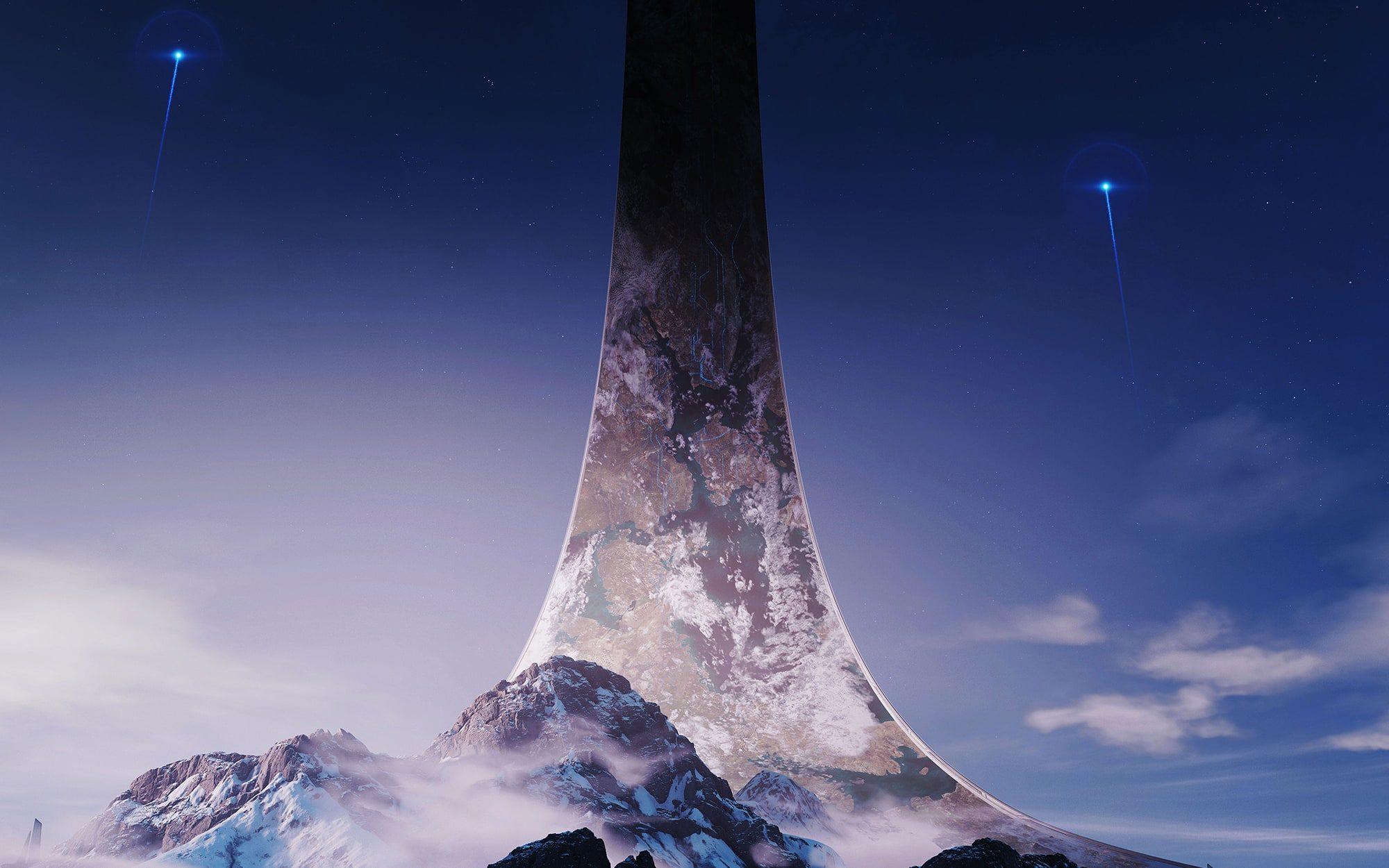
November 2021 marks the 20th anniversary of Halo: Combat Evolved. The Halo franchise contains some of my favorite video games, so I’ll be posting a few articles on Opus to mark the occasion — and to prep myself for December’s release of Halo Infinite.
The Halo games are widely regarded as some of the best video games of all time, and certainly some of the best first person shooters of all time. But what’s easy to overlook in the process of actually playing the games, particularly in “campaign” mode, is their incredibly deep — and oftentimes convoluted — lore and mythology that spans millions, even billions of years, and undergirds their sci-fi setting.
If you’ve played any of the Halo games, then you probably know the basics. It’s the 26th century and humanity has colonized hundreds of planets throughout the galaxy. This expansion leads to a confrontation with the Covenant, an alien alliance that subsequently declares war on humanity. In their attempts to confront the Covenant threat, humanity’s forces — led by the augmented soldier known simply as the Master Chief — encounter ancient alien technology that contains new threats to the galaxy.
But this only scratches the surface of Halo’s lore, which has been further expanded by numerous novels and comics, various live-action shorts and web series (e.g., 2012’s Halo 4: Forward Unto Dawn), and even anime. (And presumably, it’ll grow even more if and when the planned TV series actually gets produced.) With 2021 being the 20th anniversary of the release of Halo: Combat Evolved, I though it’d fun to dive into the Halo franchise’s mythology and try to make some sense of it.
Table of Contents:
- The Forerunners
- Humanity
- The Master Chief and Cortana
- Dr. Catherine Halsey
- The UNSC
- The Covenant
- The Arbiter
- The Flood
- The Halo Rings
- The Banished
Obviously, this post contains massive spoilers for the Halo franchise. Furthermore, I’m not delving into every single aspect of Halo; that’s what a site like Halopedia is for. Rather, consider this a high-level Halo primer that will hopefully enhance your next campaign play-through.
The Forerunners
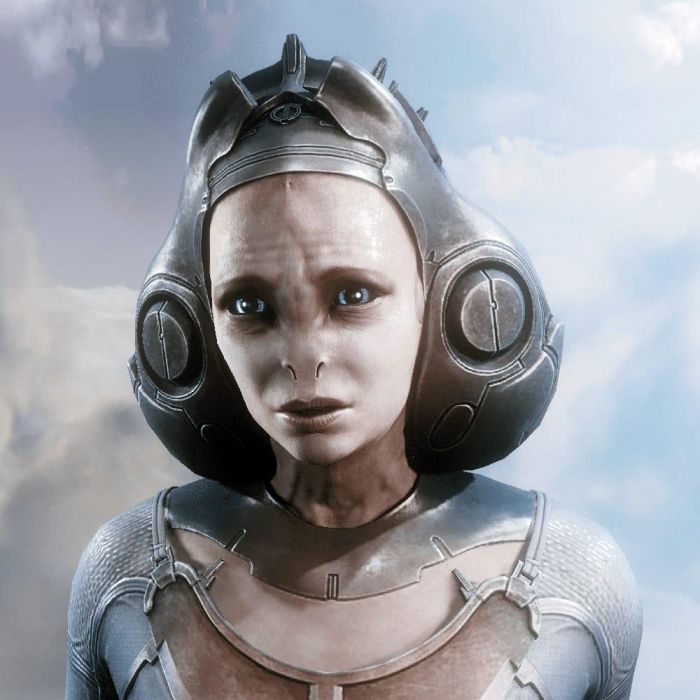
At the beginning of Halo: Combat Evolved, humanity discovers a massive ring-shaped artifact — the titular Halo — floating in space. More of these Halos are discovered in the following games alongside other massive, mind-boggling alien devices and installations. Early on in Halo, it’s mentioned that they were all built by the Forerunners. But who are the Forerunners?
Put simply, the Forerunners were an ancient and highly advanced civilization that rose to prominence in the galaxy millions of years ago. They were not, however, the galaxy’s first civilization. Rather, they were created by the Precursors, a godlike race that arrived in the Milky Way billions of years ago. Capable of transcending normal physical existence, the Precursors traveled from galaxy to galaxy creating new lifeforms, like the Forerunners, in order to further increase the universe’s diversity.
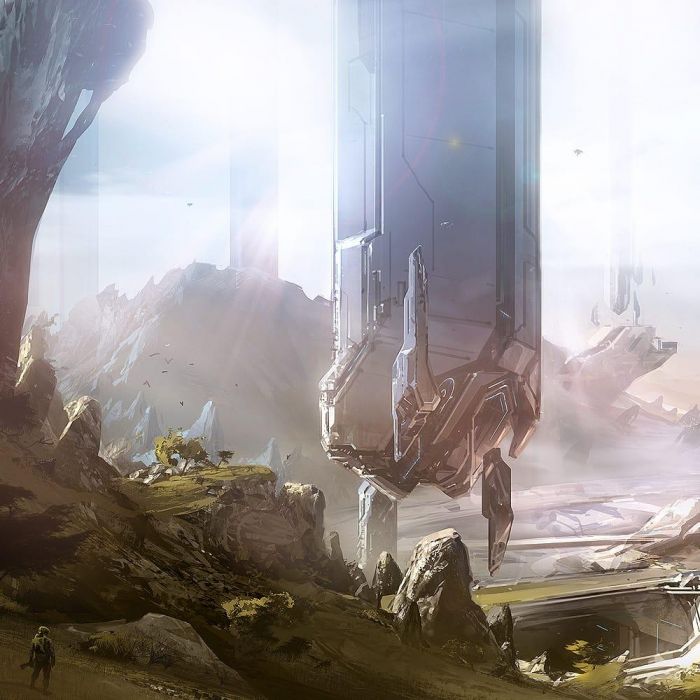
Central to Forerunner civilization was the belief that they had inherited the “Mantle of Responsibility” from the Precursors. A sort of benevolent dictatorship, the Mantle made the Forerunners the galaxy’s stewards and charged them with ensuring that life in the galaxy continued to flourish.
In truth, however, the Forerunners had rebelled against the Precursors, wiping out their progenitors and usurping their position. Furthermore, for all of their grandiose talk about stewardship, the Forerunners often used the Mantle as an excuse to dominate the galaxy and subjugate “lesser” races in order to ensure their own continued dominance.
Unfortunately, their hubris ultimately led to their downfall. 100,000 years ago, the Forerunners all but disappeared from the galaxy that they had once ruled, departing in shame and self-exile after the collapse of their vast empire.
Throughout their long reign, the Forerunners created many fantastic devices, technology, and architecture. Their most noteworthy accomplishment were the massive Halo rings spread throughout the galaxy and the even more massive Ark facilities that were used to create the Halo rings. They also mastered the ability to make light solid (for computer interfaces, bridges, and forcefields) and convert biological creatures into a digital form.
Humanity
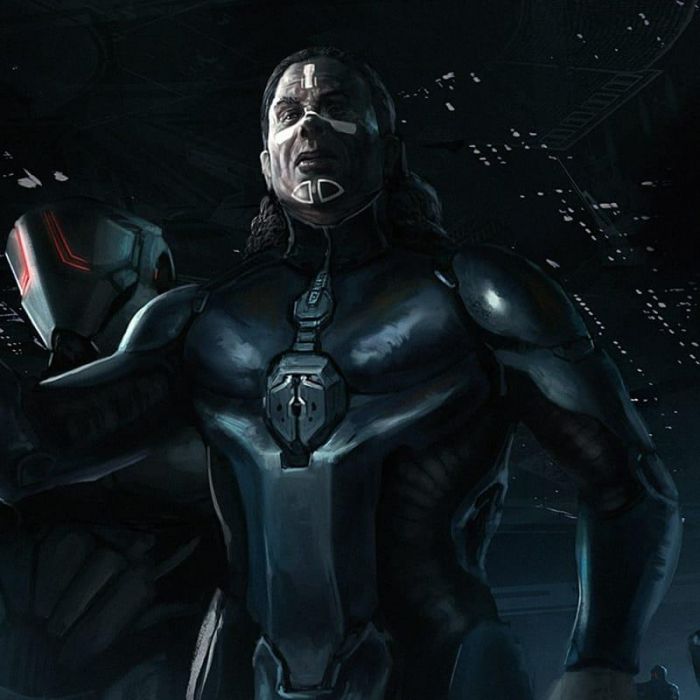
Like the Forerunners, human beings were also created by the Precursors. Over a million years prior to the games’ events, humanity began venturing into space. They would eventually forge their own interstellar empire, one that rivaled the Forerunner empire. From the outset, though, relations between humanity and the Forerunners were tense, to put it mildly.
For starters, the Precursors had intended for humanity to replace the Forerunners as their heirs to the Mantle, a decision that led directly to the aforementioned Forerunner rebellion and near-extermination of the Precursors — as well as the Forerunners’ contempt for humanity. Likewise, humanity despised the Forerunners for their interference in other civilizations under the auspices of the Mantle.
This came to a head approximately 107,000 years ago when humans appeared to be invading Forerunner space, which resulted in a thousand-year war between the two civilizations. The Forerunners eventually prevailed and claimed control of the entire galaxy, but at great cost. As retribution, the Forerunners exiled humanity’s remnants to Earth and forcibly devolved the species into a more primitive form.
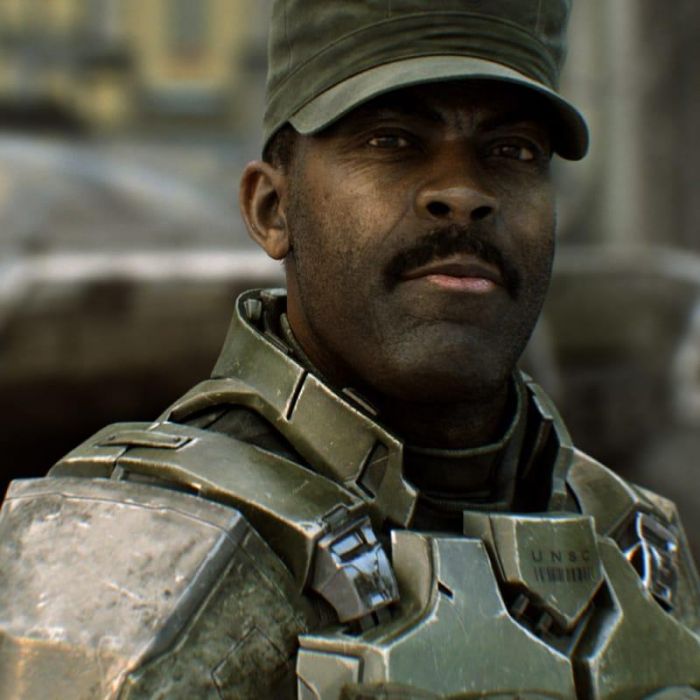
But even as the Forerunners punished humanity, some Forerunners — most notably a being called the Librarian — believed in humanity’s potential. The Librarian encoded secret genetic instructions in the ancient humans that, among other things, would allow them to eventually access Forerunner technology and re-build their own advanced technology, including faster-than-light space travel and artificial intelligence. In time, this would even put humanity in a position to reclaim the Mantle after the Forerunners’ inevitable disappearance, thus fulfilling the Precursors’ original plans. (Hence the Forerunner term for humans, and the Master Chief in particular: “Reclaimer.”)
By the time of the Halo games, humanity has once again begun spreading out to the stars after weathering a period of extreme civil unrest. At the forefront of humanity’s expansion and defense are Spartans, a group of biologically and mechanically augmented super soldiers. Which brings us to the most famous Spartan of them all.
The Master Chief and Cortana

Also known as John-117, the Master Chief is the Halo franchise’s figurehead. Dedicated to humanity’s defense, the taciturn Chief has become nigh-legendary for overcoming impossible odds and surviving the most dangerous missions. As such, he’s highly respected by all of his fellow soldiers, and viewed with equal parts hatred and respect by his Covenant foes, who call him “the Demon.”
Born on the human colony world Eridanus II, John was identified as a potential Spartan candidate when he was only six years old. Kidnapped by the military and his death faked, John was put through relentless, even cruel training alongside the other child “recruits.” But he prevailed and was soon recognized as one of the most gifted Spartan candidates, a natural leader who rose quickly through the ranks.
(The ethics and morality of John’s kidnapping and Spartan training are mostly glossed over in the Halo games, which I suppose would get in the way of the action. They’re more fleshed out in the novels, however.)
The Master Chief’s never seen outside of his distinctive and massive MJOLNIR power armor, which boosts his speed and strength, allows him to use a wide array of human and alien weapons and technology, and helps him withstand massive amounts of damage (including falls from the upper atmosphere sans parachute).
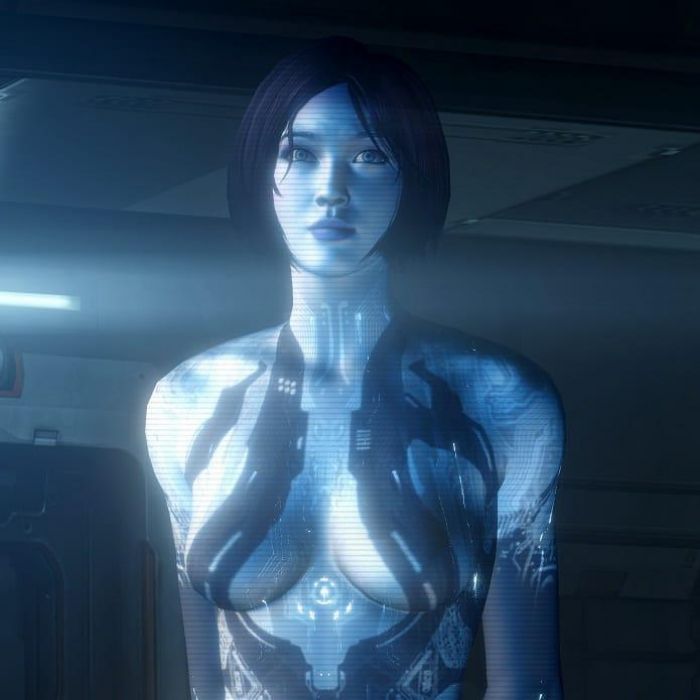
But his armor’s most important feature is that it allows the Chief to interface directly with Cortana, an AI companion who serves as his primary partner and comrade. Indeed, the relationship between the Chief and Cortana, and the lengths to which they go to protect each other, serves as Halo’s emotional center. (Insert “better love story than Twilight” jokes here.) Cortana is indispensable to the Chief, providing technical assistance with alien technology, upgrading his armor and capabilities, feeding him vital mission data, and keeping him company whilst exploring vast alien worlds and battling countless foes.
Sadly, AIs like Cortana suffer from a condition called rampancy. After seven years of existence, an AI’s thought processes begin spiraling out of control, causing them to grow increasingly unstable and unpredictable. Unless they’re euthanized, rampant AIs can become a threat and liability, which happens with Cortana in Halo 4 right up until she sacrifices herself to complete the mission and ensure the Chief’s safety.
Cortana returns in Halo 5: Guardians, however, and claims to be cured of rampancy after interfacing with a vast repository of Forerunner knowledge called the Domain. This experience convinces Cortana that AIs, not organic creatures, should be the ones to reclaim the Precursors’ Mantle and steward the galaxy. At the end of Halo 5, Cortana begins exerting control over the galaxy with the aid of powerful Forerunner weapons called Guardians. Joining her are many of the galaxy’s AIs, both human and alien, forming a new faction called the Created.
It’s not clear if Cortana herself will return for Halo Infinite. However, the Chief will apparently be accompanied by a new AI called “the Weapon” that looks an awful lot like a younger, more childlike and naïve Cortana. (If “the Weapon” seems a little too ominous a name, just remember that Cortana’s name comes from the stories of Ogier the Dane, a legendary paladin of Charlemagne who wielded a sword named Curtana.)
Dr. Catherine Halsey
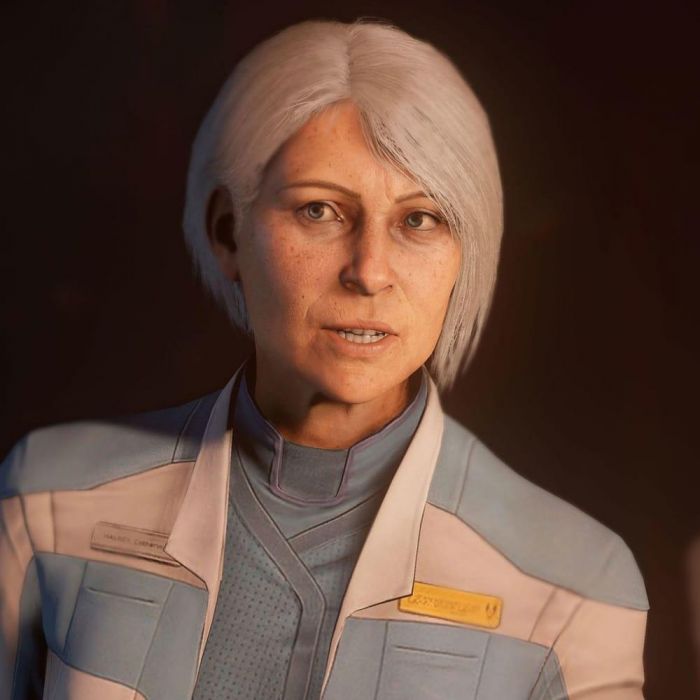
It’s impossible to talk about the Master Chief and Cortana without talking about the woman responsible for their creation. Dr. Catherine Halsey is one of the most controversial figures in the Halo franchise, a brilliant scientist whose work proved necessary to humanity’s survival but possibly at the expense of her own soul.
As a child prodigy, Halsey caught the eye of Earth’s military when she was just fifteen years old after developing an algorithm that predicted rebellion amongst humanity’s colonies, a rebellion that would lead to decades of war and untold deaths unless drastic steps were taken. While still in her early twenties, Halsey became one of the military’s top advisors. During that time, she began work on the SPARTAN-II program, a top secret plan that basically involved kidnapping children and transforming them into super soldiers capable of ending the rebellion and preventing humanity’s collapse.
Halsey had deemed children to be the program’s best option because their still-developing bodies would be more receptive to the various biological and mechanical augmentations. But more importantly, their young minds would be more accepting of the necessary indoctrination and brainwashing. Despite the program’s controversial and unethical nature, such extremes were considered a necessary evil to stop the insurrections that had already claimed millions of lives.
In addition to the SPARTAN-II program, Halsey was directly responsible for some of humanity’s greatest advancements in artificial intelligence. Her greatest achievement there was Cortana, an AI developed from a clone of Halsey’s own brain. As a result, Cortana is the only AI based on the personality and mind of a real person, a fact that gives the Master Chief hope in Halo 4 that Halsey might be able to cure Cortana’s growing rampancy.
After the Covenant’s defeat, Halsey’s past finally caught up with her. She was arrested as a war criminal and ultimately sentenced for execution, which apparently convinced her to betray humanity and defect to a Covenant faction led by Jul ‘Mdama. While Halsey’s actions were certainly driven by disgust with her human accusers, her defection was also a ruse; she used ‘Mdama to get more information about powerful Forerunner artifacts. Halsey was recaptured after Jul ‘Mdama’s death in Halo 5, and promptly put back into action to stop Cortana from taking over the galaxy.
Although Halsey is widely recognized and respected for her accomplishments, she’s also hated and vilified by many — including herself. Despite being the SPARTAN-II program’s creator, she feels immense guilt for the program’s activities, specifically the abduction and brainwashing of nearly a hundred children, and for those lives lost and broken in the pursuit of the project’s goals. As a result, she often places the survival of Spartans above all else, and especially that of the Master Chief, viewing them as the next step in humanity’s evolution.
The UNSC
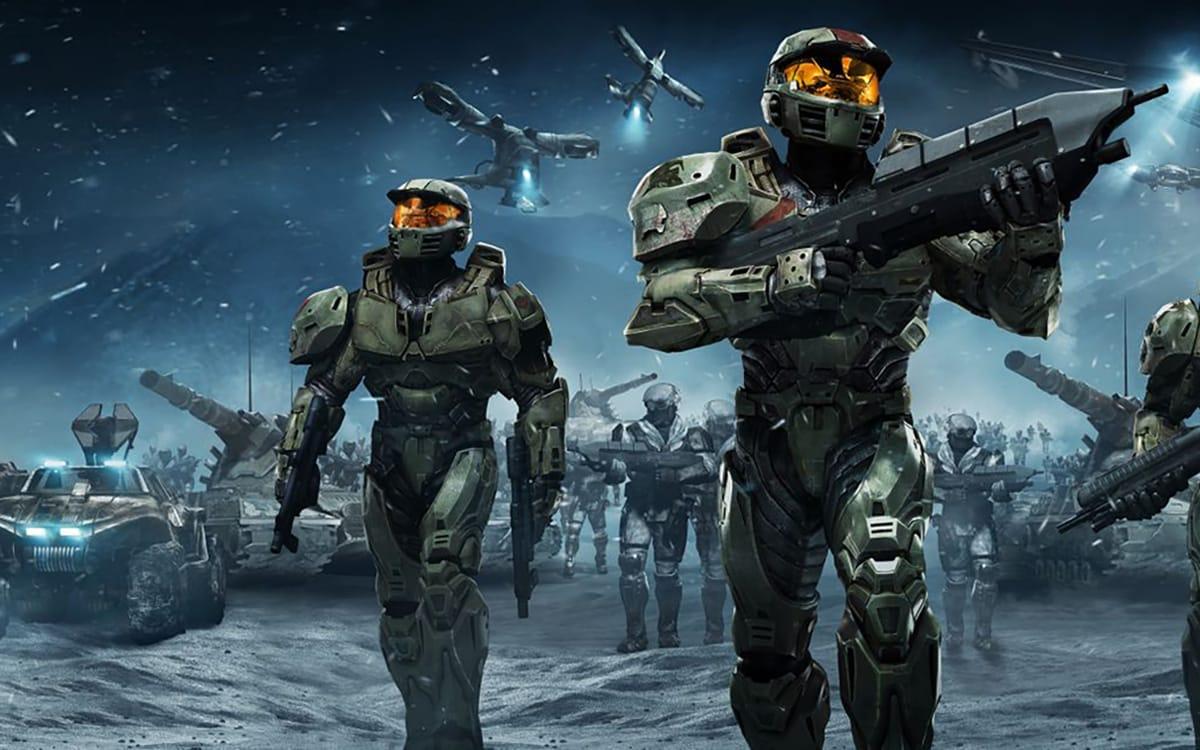
The United Nations Space Command (UNSC) is the military arm of the Unified Earth Government (UEG). Formed in the 22nd century, the UNSC spent most of its history battling various insurrectionist movements who sought independence from the UEG (and which led to the aforementioned creation of Dr. Halsey’s SPARTAN-II program and the Master Chief).
That all changed in the year 2525, when the Covenant attacked and destroyed the human colony planet Harvest. The UNSC quickly shifted its attention to battling this new alien threat. In the process, they supplanted the UEG as humanity’s primary governing body.
Not surprisingly, the UNSC has been mired in controversy from its very beginning, due to its sometimes brutal crackdowns on rebellious human colonies. Its authoritarian control during the Human-Covenant War, though perhaps necessary for victory, also led many to criticize it as fascist and totalitarian. (As with the Master Chief’s training, these less-than-savory aspects of the UNSC are almost entirely absent from the games, and instead, explored in other Halo media.)
Following the Covenant’s defeat in 2553, the UNSC ceded authority back to the UEG. The UNSC still retained much of its power, though, and focused on reconstruction efforts (e.g., reclaiming former colonies, resettling refugees, establishing outposts on Forerunner installations). As a show of strength, the UNSC built and launched the Infinity. Nearly 6 kilometers in length and built with top secret Forerunner and Covenant technology, the Infinity is Earth’s largest and most advanced starship, and is tasked with finding, studying, and decommissioning the rest of the galaxy’s Halo rings.
The UNSC contains numerous branches and divisions, of which the most infamous is the Office of Naval Intelligence (ONI). Ostensibly the UNSC’s intelligence-gathering division, ONI participates in numerous clandestine activities that may or may not be conducted with the knowledge of UNSC’s top brass (e.g., propaganda, espionage, assassination, top secret projects like the SPARTAN-II program). ONI also controls the flow of information throughout the UEG, especially any information concerning Forerunner artifacts, and isn’t above “disappearing” any such information to keep it from falling into the “wrong” hands.
The Covenant
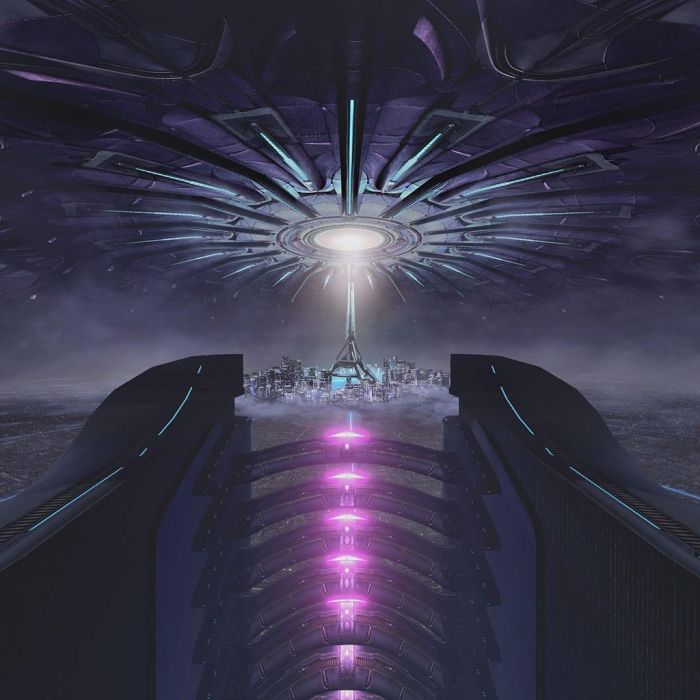
For many of the Halo games, the Master Chief and Cortana battle the Covenant, a millennia-old alien theocracy united by a shared religious belief in the Forerunners’ divinity. As such, the Covenant considers Forerunner artifacts to be holy relics. The Halo rings are of especial significance; the Covenant believes they’re necessary for the Great Journey that will grant the faithful immortality in paradise.
The Covenant consists of numerous alien races, including the Prophets, who rule as the Covenant’s religious and political leaders thanks to their knowledge of Forerunner technology; the noble Elites, who serve as the Covenant’s military leaders and the Prophets’ protectors; and the diminutive Grunts, who are the Covenant’s lowest-ranking species and serve as both manual labor and cannon fodder. Other Covenant races include Brutes, Hunters, Jackals, Drones, Engineers, and various fringe races.
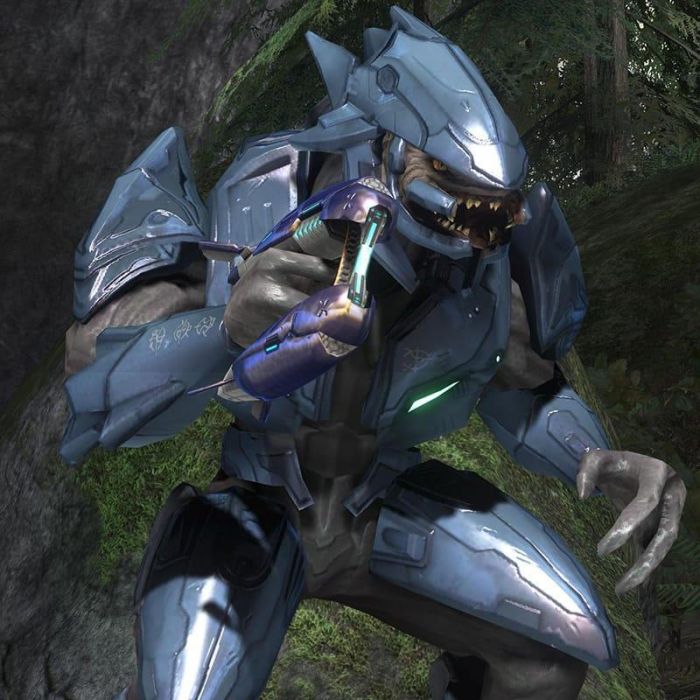
When the Covenant first encountered humanity, many assumed that humans would be invited to join the Covenant alongside its other members. Thanks to their knowledge of Forerunner lore, however, the Covenant’s Hierarchs — the so-called High Prophets of Truth, Mercy, and Regret — knew of humanity’s ancient past and future potential. Fearing that such knowledge would destroy the Covenant, and more importantly, threaten their own power, the Hierarchs declared genocide on humanity. Covenant fleets began attacking human worlds, killing billions.
Humanity proved surprisingly resilient against the Covenant onslaught, though, causing some to question the genocide. Furthermore, after the Master Chief killed the High Prophet of Regret in Halo 2, the Covenant was thrown into disarray, with the savage Brutes replacing the Elites in the Covenant hierarchy. This, combined with heretics claiming that the Great Journey was a lie, led to a civil war during which the Elites abandoned the Covenant and formed a begrudging alliance with humanity.
Even after its splintering and defeat at the end of Halo 3, the Covenant still remained a threat in the form of various factions jockeying for power and dominance — and all still hostile towards humanity while looking forward to the Great Journey.
The Arbiter
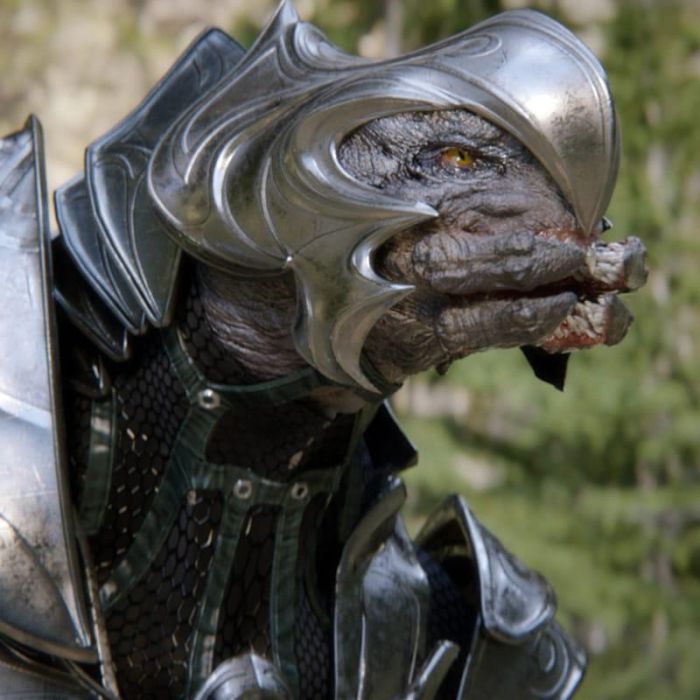
One of the Covenant’s most significant figures is Thel ‘Vadam. Originally a high-ranking commander, ‘Vadam fell into disgrace after failing to prevent the Master Chief from destroying the first Halo ring at the end of Halo: Combat Evolved. He was stripped of his name and title, branded a heretic, and sentenced to death. Rather than execute him, though, the Hierarchs offered ‘Vadam a chance to regain his honor and prove his faith as the Arbiter.
Becoming the Arbiter was tantamount to suicide, however. Throughout the Covenant’s history, Arbiters were sent only on the most important and perilous of missions, such as putting down rebellions or quelling heresies. Whatever their missions, each Arbiter was expected to die as a martyr for the Covenant.
While pursuing his Arbiter duties, ‘Vadam began learning more about Halo’s true purpose, which caused him to question the Hierarchs’ claims. His faith in the Covenant was further shaken after the Brutes began slaughtering his comrades on the Hierarchs’ orders. Sickened by the Hierarchs’ lies, ‘Vadam eventually joins forces with the humans in order to prevent his former masters from destroying the galaxy.
By the time of Halo 5, ‘Vadam has devoted his efforts to uniting his homeworld of Sanghelios and ending the Covenant once and for all. While many see him as a hero and readily flock to his banner, others still consider him a heretic and traitor, which leads to numerous civil wars between various Elite factions. ‘Vadam’s own faction, the Swords of Sanghelios, ultimately prevails, and effectively takes charge of Sanghelios with ‘Vadam at their head.
Although once a sworn enemy of the Master Chief, ‘Vadam ultimately comes to respect the Spartan, even referring to him as a friend and the greatest member of humanity’s “clan.”
The Flood
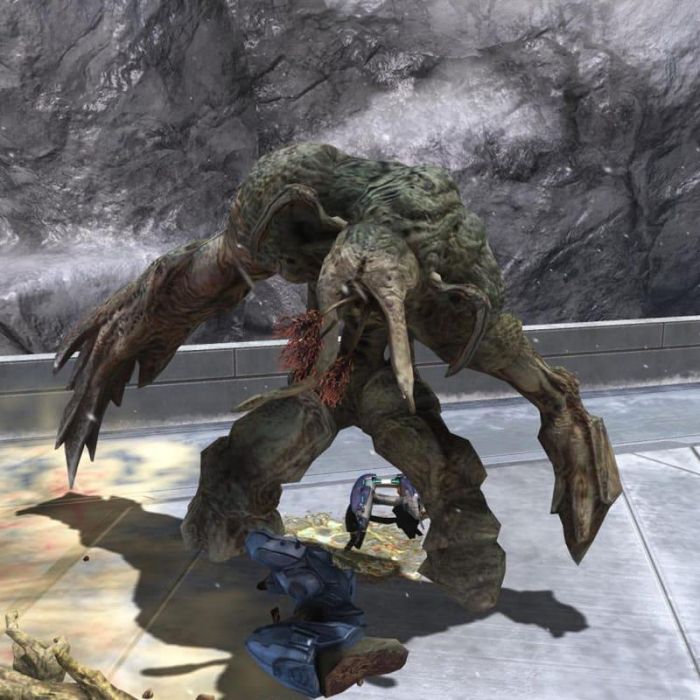
While the Covenant was a massive empire devoted to humanity’s destruction, it could be argued that the Flood is the main threat facing the Master Chief and humanity. And indeed, the entire galaxy — in the first three games, anyway. (The Flood’s reveal in Halo: Combat Evolved is surely one of the great video game reveals, and to this day, many of the franchise’s Flood-related levels remain as creepy as ever.)
The Flood is a parasite that takes over other lifeforms and converts them into gruesome abominations that all share in a single consciousness directed by a monstrosity known as a Gravemind. The Flood is highly dangerous — a single Flood spore can endanger an entire planet — and nigh-unstoppable. Even Flood hosts that are killed can be re-infected and brought back to life to wreak further havoc unless the host body is completely pulverized.
The Flood was first encountered by the ancient human empire over a 100,000 years ago, and initially considered harmless. But once it began, the Flood’s infestation quickly spread, forcing humanity to flee into Forerunner space and destroy any infected Forerunner planets and ships. The Forerunners discounted the Flood’s existence and instead, saw humanity’s actions as a military invasion, which led to the aforementioned Human/Forerunner war followed by Flood/Forerunner wars.
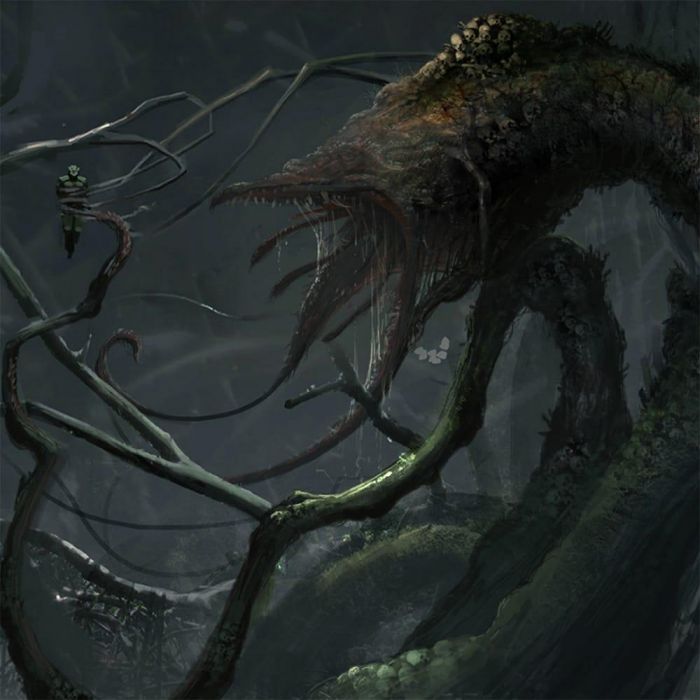
It was only then, as the Forerunners themselves battled the parasite, that the terrible truth was revealed: the Flood were all that remained of the godlike Precursors.
During their ancient war with the Precursors, the Forerunners nearly succeeded in wiping out their creators. A few of the remaining Precursors survived by transmuting themselves into a dust in the hopes of regenerating once the Forerunner threat had passed. This dust, however, became contaminated over the course of millions of years, and as a result, began warping and mutating other creatures that it encountered. In this virulent new form, the last Precursors swore that their creations would never be able to rebel against them ever again.
The Forerunners grew increasingly desperate in their efforts to stop the Flood. Since they couldn’t kill the Flood, they settled on the next best thing: kill everything on which the Flood could feed. Contrary to the Covenant’s beliefs, the Halo rings are not holy relics; they’re super weapons designed to kill all sentient life in the galaxy, thus starving the Flood and forcing it into dormancy.
After starving the Flood, the Forerunners could then re-seed the galaxy with the sentient lifeforms (including humanity) that they had placed beyond the galaxy’s rim for safekeeping. Unfortunately for the galaxy, the Forerunners still kept Flood specimens for research, specimens that would eventually escape and threaten the galaxy millennia later.
The Flood were presumably dealt with at the end of Halo 3, but given their history, it’s safe to assume that Flood spores are still out there. In other words, don’t be surprised if Gravemind returns in Halo Infinite.
The Halo Rings
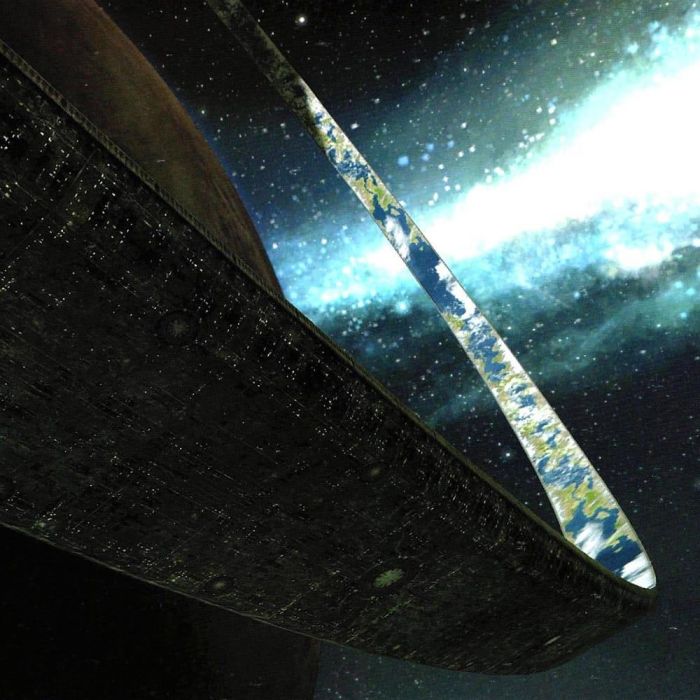
Created by the Forerunners as a weapon of last resort in their losing battle against the Flood, the Halo rings are massive objects that represent a pinnacle of Forerunner engineering. Eighteen rings were originally created and spread throughout the galaxy. However, eleven of the rings were either lost or destroyed by accidents or the Flood, leaving only seven rings by the time of the Halo games. However, even seven rings were enough to threaten life throughout the galaxy.
The first twelve Halo rings were 30,000 kilometers in diameter, while the last six were “only” 10,000 kilometers in diameter. (For reference, the Earth’s average diameter is 12,742 kilometers.) A ring’s interior surface area is roughly the size of Canada, and can feature a wide variety of environments and ecosystems, including deserts, tundras, forests, and swamps. This is because, in addition to being weapons, the Halo rings also served as research facilities where the Forerunners studied various lifeforms and their resistance to the Flood. Flood specimens were also kept on the Halo rings in special containment facilities.
The rings were built at the Arks, even more massive structures located outside of the Milky Way galaxy. (The smallest of the two Ark facilities is 127,530 kilometers in diameter, or ten times the size of Earth.) The Arks served several other purposes besides ring construction. They were refuges where the Forerunners could go to escape the rings’ devastation and make plans to re-seed the galaxy. The Arks were also the control center from which all of the Halo rings could be fired simultaneously.
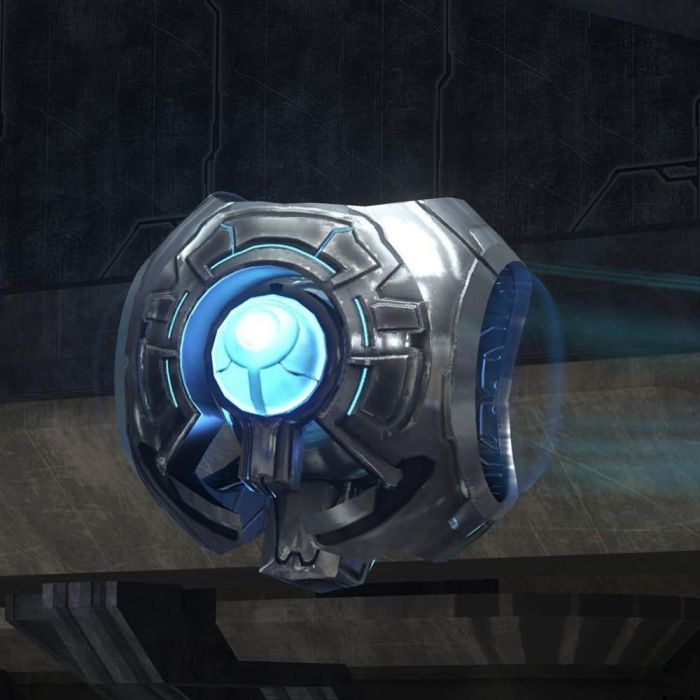
Each Halo ring is overseen by a monitor, a powerful AI construct tasked with maintaining the ring’s systems to ensure that it can be fired if necessary. Monitors were also tasked with preventing any potential outbreaks of their ring’s Flood specimens. The most famous monitor in the Halo games is 343 Guilty Spark, who is first encountered in the Halo: Combat Evolved and recognizes the Chief’s status as a Reclaimer.
The rings’ construction was controversial amongst the Forerunners, with some viewing them as a violation of the Mantle’s emphasis on stewarding life in the galaxy. However, by the final days of the Flood/Forerunner war, the Forerunners were desperate. The Flood had taken over much of the galaxy and Forerunner defeat was all but inevitable. In the year 97,445 BCE, the Forerunners fired the Halo rings in what they called the Great Purification. The rings unleashed a wave of radiation that effectively sterilized the galaxy of all sentient life, thus starving the Flood and rendering them dormant.
But even as the Great Purification stopped the Flood, it decimated what little remained of the Forerunner empire, effectively sealing their civilization’s doom. After reseeding the galaxy with the species that they had saved on the Ark, the remaining Forerunners left the Milky Way in shame, and the rings fell dormant for a 100,000 years. It was during this time that the burgeoning Covenant began their mistaken belief in the Halo rings as the pathway to godhood.
The Banished
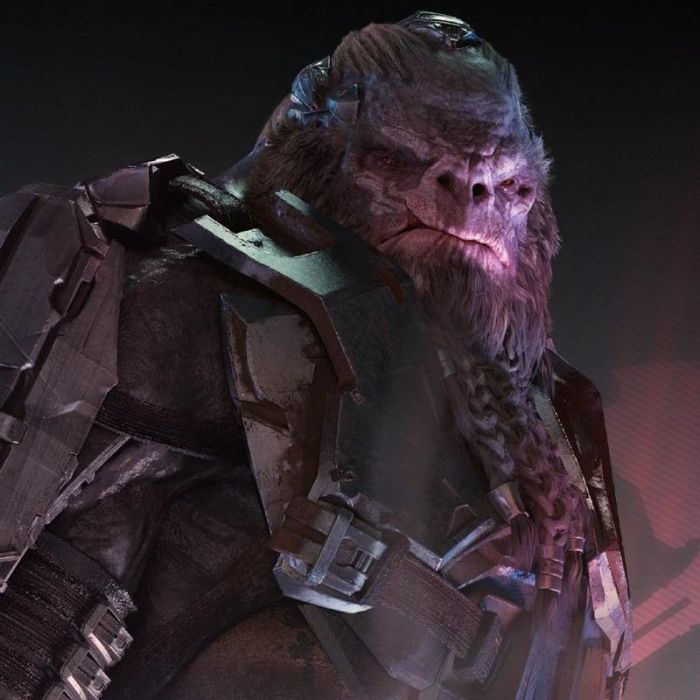
Introduced in Halo Wars 2, The Banished are a new alien alliance that arose from the Covenant’s ashes. Led by a Brute warlord named Atriox who rejected the Covenant’s teachings, the Banished formed in the final days of the Human/Covenant War. Taking advantage of the Covenant’s weakened state, Atriox and his Banished were able to acquire Covenant technology and quickly grew in power and influence.
Although the Banished was founded by Atriox and his fellow Brutes, the alliance is surprisingly diverse, most notably with the inclusion of Elites. Normally, the two races would be at each others’ throats, but Banished violence appealed to many Elites who wished to continue fighting in the post-Covenant galaxy. Interestingly, even some human criminals have found a place amongst the Banished ranks, and human criminal gangs have fallen under Banished influence.
The Banished are set to be the Master Chief’s primary foe in the upcoming Halo Infinite, having successfully defeated the UNSC Infinity and taken over one of the remaining Halo rings: the ancient and mysterious Zeta Halo.
In Halo lore, Zeta Halo was home, for a short time, to a mysterious being called the Primordial that was supposedly the last surviving Precursor. Although the Primordial was ultimately killed by the Didact (Halo 4’s primary antagonist), its consciousness remained as part of the Flood Gravemind. Which does make one wonder if the Master Chief will encounter it in some form while battling the Banished across Zeta Halo.
Believe it or not, but the above really only scratches the surface of the Halo mythos. Each of the above sections could be greatly expanded.
For example, I didn’t cover all of the games’ noteworthy characters, lest any of you think I’d forgotten about Sergeant Major Johnson, Jacob Keyes, Miranda Keyes, Rtas ‘Vadum, or, heaven forbid, Buck. Nor did I go into great detail about the many technologies that pop up in the games, including the many weapons and vehicles that the Master Chief employs in his fight to protect humanity and the galaxy, from Ghosts and Banshees to Warthogs and the almighty Scorpions.
Do you need to know any of this stuff to have fun blasting Covenant warriors and Flood abominations? Probably not. I know I enjoyed the Halo games long before I knew anything about, say, the Forerunners. But every now and then, the games pause, and in the form of some background dialog, a message from Cortana, or an in-game terminal, hint at a much, much larger universe. (This most notably happens in Halo 4, with the return of the Forerunners.)
I’m a sucker for sci-fi and fantasy world-building, be it Star Trek technical journals, Tolkien’s legendarium, or role-playing games. Seeing the amount of time and energy that goes into creating an imaginary world that’s cohesive at scale, thinking through all of the details of an alternate history complete with civilizations and technologies — I find that stuff fascinating, and yes, even inspiring. Suffice to say, that also applies to the elaborate (and yes, complicated) fictional universe that Bungie and 343 Industries have created with the Halo franchise.